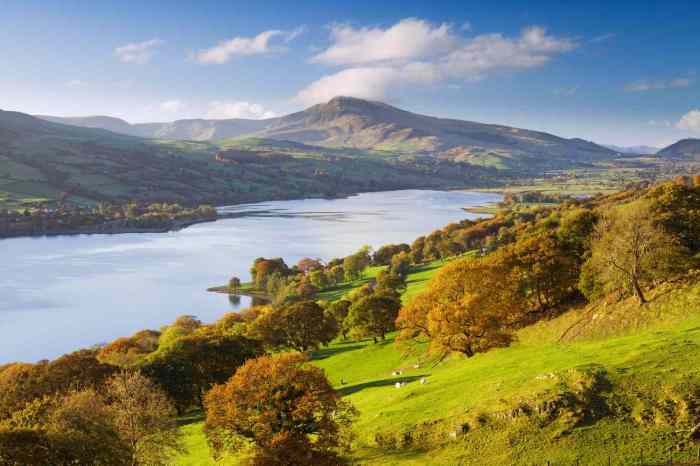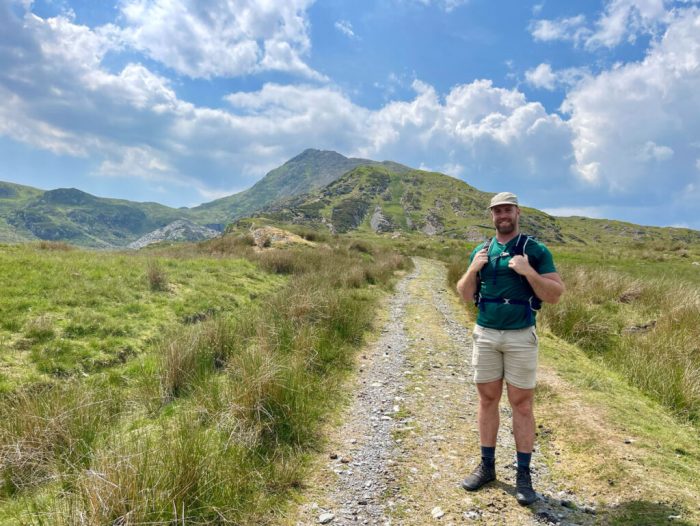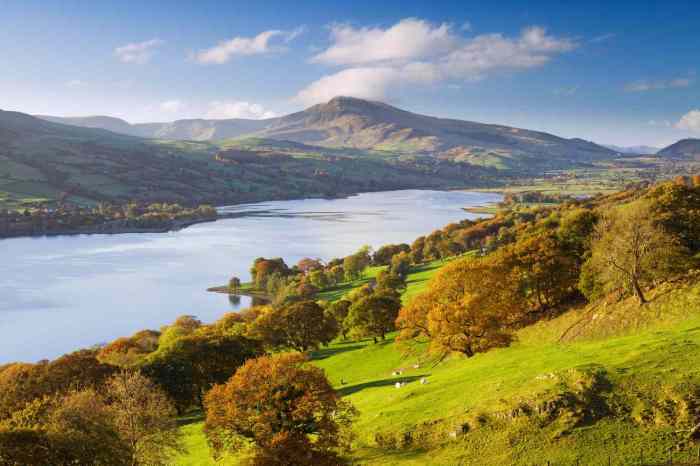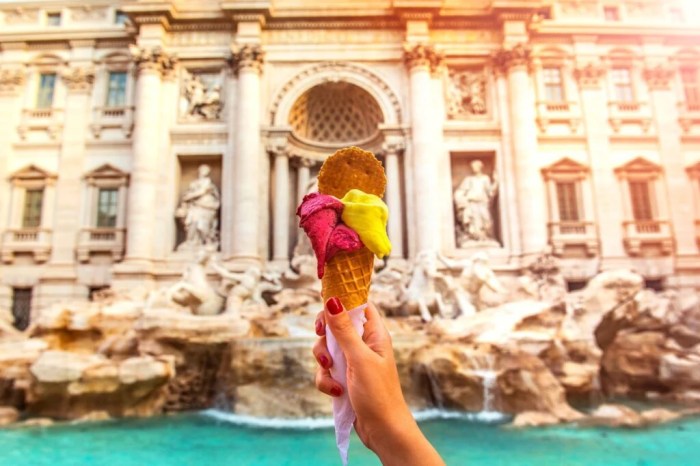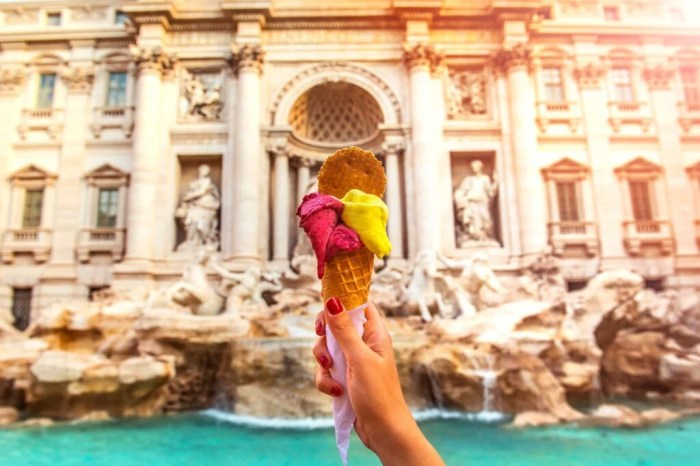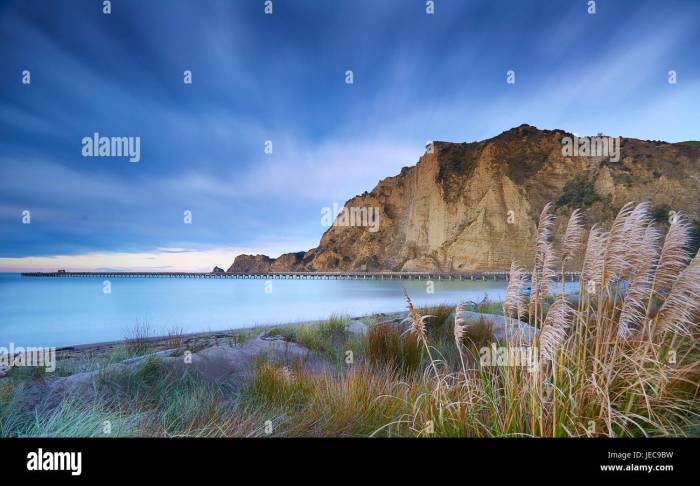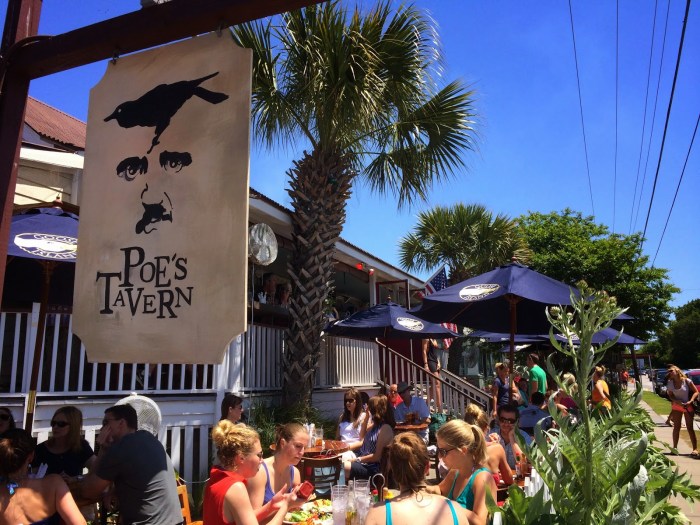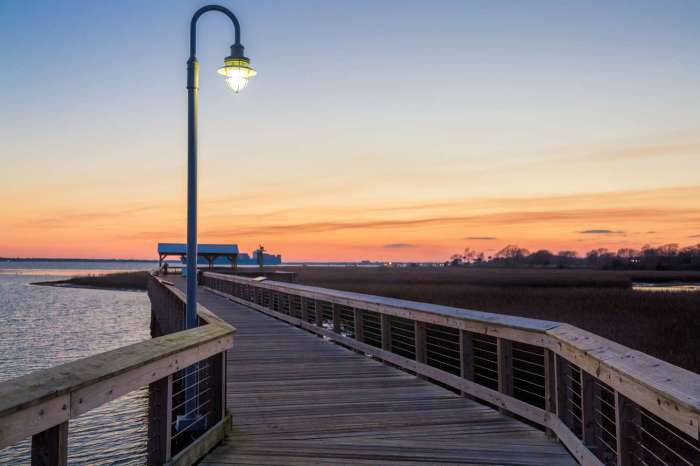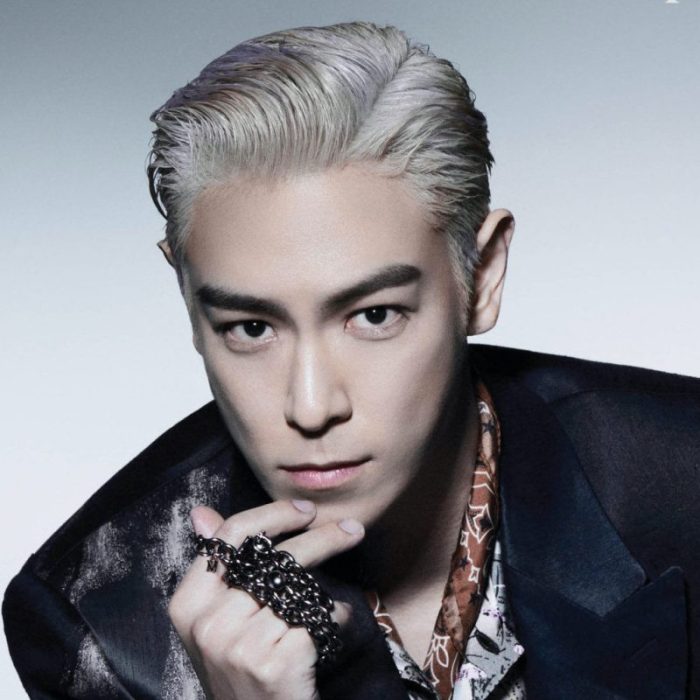Top things to do in Frankfurt: Discover the vibrant heart of Germany, from its historical landmarks to its bustling culinary scene and exciting nightlife. This guide unveils the best experiences, offering a captivating journey through Frankfurt’s diverse offerings.
Frankfurt, a major European financial hub, seamlessly blends modern architecture with rich history. This city boasts a unique blend of business and leisure opportunities, making it an ideal destination for both tourists and professionals. From exploring iconic landmarks to savoring exquisite cuisine, Frankfurt has something for everyone. This comprehensive guide will highlight the must-see landmarks, cultural experiences, culinary delights, shopping options, outdoor activities, and vibrant nightlife, ensuring a memorable trip.
Introduction to Frankfurt: Top Things To Do In Frankfurt
Frankfurt, nestled in the heart of Germany, is a city of captivating contrasts. It seamlessly blends its rich historical past with its modern-day prominence as a global financial hub. Beyond its towering skyscrapers and bustling financial district, Frankfurt offers a surprising array of cultural experiences, historical landmarks, and vibrant nightlife. This dynamic city beckons visitors with its unique charm, beckoning exploration of its multifaceted character.Frankfurt’s historical significance extends far beyond its present-day stature.
Its medieval roots, evident in the well-preserved Old Town, are intertwined with its evolution into a significant trading center along major European waterways. This historical context, combined with its modern advancements, creates a fascinating narrative that resonates throughout the city. Its role as a major European financial center has profoundly shaped its tourism landscape, attracting both business travelers and leisure seekers.
This convergence of history, finance, and culture makes Frankfurt a truly compelling destination.
Frankfurt’s Tourism Profile
Frankfurt’s tourism sector is multifaceted, attracting diverse visitors with a variety of interests. The city’s strong financial sector draws a significant number of business travelers, seeking conferences, meetings, and networking opportunities. Complementing this, Frankfurt also caters to leisure tourists, who are drawn to the city’s museums, galleries, and parks. Furthermore, Frankfurt is a destination of cultural significance, attracting those interested in experiencing its historical sites, architectural marvels, and vibrant cultural scene.
Frankfurt’s got tons of amazing sights, but if you’re looking for something a bit different, check out the Limmen Bight Marine Park. It’s a fantastic spot to spot some wildlife and enjoy the natural beauty nearby, offering a unique experience from the usual Frankfurt attractions. This hidden gem adds a fresh perspective to the top things to do in Frankfurt, proving that there’s more to the city than meets the eye.
Limmen bight marine park is a great addition to your Frankfurt itinerary.
| Type of Tourism | Description |
|---|---|
| Business Tourism | Frankfurt’s prominent role as a European financial center attracts numerous business travelers, conferences, and meetings. |
| Leisure Tourism | The city’s rich history, modern attractions, and cultural offerings draw leisure tourists seeking to explore historical sites, museums, and parks. |
| Cultural Tourism | Frankfurt’s historical landmarks, architectural marvels, and vibrant cultural scene provide an immersive experience for cultural tourists, offering a mix of past and present. |
Historical Significance
Frankfurt’s history is deeply rooted in its strategic location. The city’s medieval past is evident in its preserved Old Town, showcasing architecture that reflects the city’s development as a crucial trading center. These historical elements offer a fascinating glimpse into the city’s evolution from a medieval trading hub to a modern metropolis.
Frankfurt’s Cultural Landscape
Frankfurt’s cultural scene is diverse and engaging. It encompasses a range of museums, galleries, and performance venues that showcase the city’s rich cultural heritage. The city hosts numerous festivals and events throughout the year, further enriching the cultural experience for visitors. This dynamic cultural landscape caters to various interests, from art and history enthusiasts to music and theater lovers.
Must-See Landmarks
Frankfurt, a vibrant blend of history and modernity, boasts a captivating array of landmarks that tell the city’s story. From imposing historical buildings to architectural marvels, each landmark contributes to the city’s unique character. Exploring these landmarks provides a deeper understanding of Frankfurt’s evolution and its place in German history and culture.These iconic structures aren’t just pretty pictures; they represent periods of significant change, architectural innovations, and historical events.
Visiting them allows you to connect with the past and appreciate the city’s architectural heritage.
Iconic Historical Buildings
Frankfurt’s historical buildings are testaments to its rich past. Many have witnessed centuries of growth and change, reflecting the city’s evolution from a small trading post to a bustling metropolis. These structures offer a glimpse into the lives of those who came before us, and the societal values of the time.
- Römerberg: The heart of Frankfurt’s historical district, Römerberg is dominated by the Römer, a medieval town hall. Its intricate architecture and historic significance are palpable. The Römer, with its half-timbered facades and soaring towers, serves as a captivating reminder of Frankfurt’s medieval roots. The surrounding area is equally rich in history, with quaint shops and restaurants that evoke the city’s vibrant past.
- St. Bartholomä Church: This imposing church, situated on the Römerberg, is a prominent landmark and a testament to Frankfurt’s rich religious heritage. Its intricate details and architectural style reflect the artistic trends of the era. It’s a place of historical significance and spiritual contemplation, embodying the city’s deep-rooted cultural identity.
Architectural Marvels
Frankfurt’s architectural scene is a testament to modern innovation and design sensibilities. The city’s skyline is punctuated by structures that are not only visually striking but also represent the city’s forward-thinking approach to urban development.
- Main Tower: As one of the tallest buildings in Germany, the Main Tower is a stunning architectural marvel that exemplifies modern design principles. Its sleek, contemporary aesthetic stands in stark contrast to the city’s historical buildings, creating a dynamic blend of old and new. Its location offers panoramic city views, making it a popular spot for visitors.
- Commerzbank Tower: This iconic skyscraper, known for its distinctive shape, is a prime example of modern architecture and a landmark that symbolizes Frankfurt’s financial prowess. The building’s unique design, which has had a profound impact on the city’s skyline, reflects its status as a leading global financial center.
Landmark Significance Comparison
| Landmark | Historical Period | Architectural Style | Significance |
|---|---|---|---|
| Römer | Medieval | Half-timbered | Historical heart of Frankfurt, symbol of medieval trade |
| St. Bartholomä Church | Medieval/Renaissance | Gothic | Important religious center, architectural masterpiece |
| Main Tower | Late 20th Century | Modern | Tallest building in Germany, symbolizes modern Frankfurt |
| Commerzbank Tower | Late 20th Century | Modern | Iconic skyscraper, symbol of Frankfurt’s financial success |
Top 5 Must-See Landmarks
These landmarks offer a captivating glimpse into Frankfurt’s history and architecture.
- Römerberg: The heart of Frankfurt’s historical district, showcasing the medieval town hall and surrounding architecture.
- Main Tower: A modern architectural marvel, one of Germany’s tallest buildings, offering breathtaking city views.
- St. Bartholomä Church: A prominent landmark with intricate details and historical significance.
- Commerzbank Tower: An iconic skyscraper that symbolizes Frankfurt’s financial standing and modern architectural innovation.
- Frankfurt Cathedral: A significant religious landmark with a rich history, showcasing architectural styles from different periods.
Cultural Experiences

Frankfurt, a vibrant metropolis, offers a rich tapestry of cultural experiences that cater to diverse interests. From world-class museums to captivating theatrical performances, the city pulses with artistic energy, reflecting its historical significance and modern dynamism. Exploring these cultural gems unveils layers of Frankfurt’s identity, showcasing its evolution from a trading hub to a contemporary cultural center.Frankfurt’s cultural institutions aren’t simply repositories of art and history; they’re living embodiments of the city’s soul.
They reflect the city’s past, present, and aspirations, fostering dialogue and understanding across different generations and perspectives. These experiences enrich the visitor’s journey, providing insights into the city’s history, values, and artistic spirit.
Museums in Frankfurt
Frankfurt boasts a diverse collection of museums, each with its own unique focus. These institutions offer a glimpse into various artistic styles, historical periods, and cultural traditions. The variety of collections provides a comprehensive overview of the city’s cultural landscape.
| Museum Name | Focus Area | Notable Exhibitions |
|---|---|---|
| Städel Museum | European art, particularly German painting and sculpture from the 13th to the 20th centuries. | Works by Rembrandt, Dürer, and other renowned artists. Often features temporary exhibitions focusing on specific artists or periods. |
| Museumsufer | Contemporary art and design, with an emphasis on international trends. | Rotating exhibitions highlighting emerging artists and cutting-edge design movements. |
| Senckenberg Natural History Museum | Natural history, paleontology, and zoology. | Extensive collections of fossils, minerals, and animal specimens. Regular special exhibitions related to scientific discoveries. |
| Liebieghaus Skulpturensammlung | Ancient and medieval sculpture. | Remarkable collections of Roman, Greek, and medieval sculptures. Frequent exhibitions showcasing specific periods or styles. |
Theatrical Performances and Festivals
Frankfurt’s vibrant theater scene offers a range of performances, from classic plays to modern interpretations. The city’s theaters often feature renowned actors and playwrights, providing opportunities to experience different theatrical styles and perspectives. Furthermore, Frankfurt hosts numerous festivals throughout the year, showcasing local and international talent in various art forms. These events create a lively atmosphere and foster community engagement.
- The Frankfurt Opera (Oper Frankfurt) offers a rich repertoire of opera performances, attracting audiences with its exceptional musicians and vocalists.
- The Schauspiel Frankfurt (Frankfurt Theatre) presents a mix of plays, from contemporary dramas to classic tragedies, engaging audiences with compelling narratives and compelling performances.
- The numerous festivals, such as the Frankfurt Book Fair, showcase the city’s dedication to literature, arts, and culture, attracting writers, artists, and enthusiasts from across the globe.
Artistic Styles and Movements
Frankfurt’s cultural institutions represent a diverse range of artistic styles and movements. From the Renaissance to the contemporary era, visitors can encounter works reflecting various periods and artistic trends. The city’s commitment to showcasing diverse art forms ensures a comprehensive understanding of artistic evolution. This encompasses a wide spectrum of artistic styles, including impressionism, expressionism, and contemporary movements.
Cultural Identity of Frankfurt
Culture plays a vital role in shaping Frankfurt’s identity. The city’s museums, theaters, and festivals contribute to a rich cultural landscape that attracts residents and visitors alike. The diverse offerings reflect the city’s commitment to fostering creativity and artistic expression. The city’s cultural life strengthens community ties and fosters a sense of belonging. Furthermore, these cultural experiences attract international attention, solidifying Frankfurt’s position as a major cultural center.
Culinary Delights
Frankfurt’s culinary scene is a vibrant tapestry woven from traditional German flavors and global influences. The city boasts a diverse range of restaurants, from cozy, family-run establishments to sophisticated fine-dining experiences. The city’s food markets hum with activity, offering a glimpse into local produce and regional specialties. This section delves into the heart of Frankfurt’s culinary identity, exploring its history, local specialties, and the atmosphere that defines its vibrant dining experiences.Frankfurt’s culinary tradition is deeply rooted in its history as a major trading hub.
This historical role influenced the city’s embrace of diverse ingredients and culinary techniques. The city’s proximity to agricultural regions has ensured access to fresh, high-quality produce, shaping its local cuisine. Today, Frankfurt’s culinary scene reflects this rich history, offering a dynamic blend of traditional dishes and innovative contemporary interpretations.
Traditional Frankfurt Dishes
Frankfurt’s culinary heritage is rich with traditional dishes, many reflecting the region’s agricultural bounty and historical trade routes. The city is renowned for its hearty, flavorful fare. A key example is “Frankfurter Kranz,” a sweet bread roll often served with breakfast or as a snack. “Grüne Soße,” a vibrant green sauce made from herbs and spices, is frequently used as a condiment for various dishes.
Regional Cuisine Variations
The culinary landscape extends beyond Frankfurt’s city limits, with distinct regional variations in taste and ingredients. The surrounding Rhine Valley, for example, features a strong emphasis on fresh fish and regional wines. The flavors of the Hessian region, including the Frankfurt area, are often characterized by the use of local vegetables and hearty meats. The diversity of ingredients and cooking styles reflects the historical and geographical influences on the surrounding areas.
Food Markets and Local Specialties
Frankfurt’s vibrant food markets are more than just places to shop; they are bustling hubs of culinary activity. The Bockenheimer Markt, for instance, showcases the region’s fresh produce, local cheeses, and regional delicacies. These markets provide a dynamic atmosphere where visitors can sample various local specialties and experience the vibrant energy of the city. These markets offer opportunities to interact with local vendors and learn more about the history and preparation of regional dishes.
Renowned Restaurants and Ambiance
Frankfurt’s dining scene features a remarkable range of restaurants, each with its own unique character. The atmosphere of a restaurant often reflects the type of cuisine offered and the overall experience. Some restaurants create a warm, inviting atmosphere, ideal for family meals or casual gatherings, while others offer a sophisticated, intimate setting for a more formal occasion. For example, “Zur letzten Instanz” provides a relaxed atmosphere, perfect for a casual lunch.
“The Press Club” offers a lively ambiance, great for catching up with friends over dinner.
Popular Restaurants in Frankfurt
| Restaurant Name | Cuisine Type | Price Range | Ambiance |
|---|---|---|---|
| Zur letzten Instanz | Traditional German | Mid-range | Relaxed, cozy |
| The Press Club | International | Mid-range to High | Lively, energetic |
| Restaurant A | Modern European | High | Sophisticated, elegant |
| Restaurant B | Asian Fusion | Mid-range | Stylish, trendy |
Shopping and Retail
Frankfurt boasts a vibrant retail scene, catering to a diverse range of tastes and budgets. From high-end boutiques to bustling markets, the city offers a unique blend of shopping experiences. The sheer variety of options makes it a shopper’s paradise, appealing to both tourists and locals alike. The retail sector plays a crucial role in Frankfurt’s economy, driving local businesses and contributing significantly to the city’s appeal.The city’s shopping destinations are carefully curated to cater to different needs and desires.
High-end boutiques offer exclusive designer pieces, while department stores provide a comprehensive selection of clothing, accessories, and home goods. Smaller, independent shops and local markets showcase unique crafts, regional products, and traditional items, creating a distinctly local experience.
High-End Boutiques and Designer Stores
Frankfurt’s upscale shopping areas, like the Zeil and the surrounding streets, are home to a concentration of high-end boutiques. These boutiques showcase luxury brands, offering a refined and exclusive shopping experience. Customers can find designer clothing, accessories, and footwear from internationally recognized labels. The focus is on exclusivity and quality, with a strong emphasis on personalized service and attention to detail.
Department Stores
Frankfurt’s department stores provide a comprehensive selection of products, from apparel and accessories to home goods and beauty products. These stores often offer a broad range of brands, from well-known international names to local favorites. The large, well-organized layouts and extensive selections cater to a wide range of needs. For instance, Kaufhof, a prominent department store chain in Germany, offers a diverse array of options.
Local Markets and Independent Shops
Frankfurt’s vibrant local markets and independent shops offer a unique shopping experience. These smaller establishments often showcase local crafts, regional products, and unique items, providing a distinct cultural immersion. This shopping experience often involves direct interaction with artisans and creators, fostering a sense of community and authenticity. The Sachsenhausen flea market, for example, offers a treasure trove of unique finds.
Shopping Malls
Frankfurt’s shopping malls provide a convenient and comprehensive shopping experience under one roof. They offer a diverse range of stores, including international brands and local retailers. The modern architecture and spacious layouts contribute to a comfortable shopping environment. The city has several malls, each catering to a slightly different demographic.
Comparison of Shopping Malls
| Mall Name | Size (approx. sq. ft.) | Brands Available | Customer Demographics |
|---|---|---|---|
| MyZeil | Large | International and local brands | Wide range of ages and income levels |
| Galeria Kaufhof | Large | Wide range of international brands | Appeals to a wide range of income levels and interests |
| Westend | Medium | Mix of high-street and designer brands | Younger and more fashion-conscious consumers |
Note: Sizes are approximate and may vary. Brand availability can also change over time.
Outdoor Activities and Parks
Frankfurt, a bustling metropolis, offers a surprising array of green spaces that provide respite from the urban hustle. These parks and gardens, with their rich history and meticulously designed landscapes, are integral to the city’s character and contribute significantly to the well-being of its residents. From tranquil gardens to vibrant recreational areas, Frankfurt’s outdoor spaces provide opportunities for relaxation, recreation, and connection with nature.These outdoor areas play a crucial role in urban life, offering vital green lungs within the concrete jungle.
They provide opportunities for physical activity, social interaction, and a much-needed escape from the stresses of everyday life. The design and historical significance of these spaces reflect Frankfurt’s commitment to fostering a harmonious blend of urban development and environmental preservation.
Frankfurt’s got some amazing sights, from the Römerberg to the Main Tower. But if you’re looking for a change of pace, consider venturing to the Stockholm archipelago and staying at the charming stockholm archipelago sandhamn seglarhotell for a truly unique experience. The beautiful scenery and relaxing atmosphere will leave you wanting more of this kind of getaway, even after returning to the bustling streets of Frankfurt.
Frankfurt’s Parks and Gardens
Frankfurt boasts a diverse collection of parks and gardens, each with its unique character and charm. These spaces cater to a wide range of interests, from leisurely strolls to active pursuits. Their varied landscapes and features contribute significantly to the city’s overall aesthetic and recreational appeal.
- The Palmengarten, a botanical garden, is a testament to Frankfurt’s commitment to preserving and showcasing the beauty of the natural world. Its diverse collection of plant species, from exotic palms to temperate flora, makes it a popular destination for nature enthusiasts and families alike. The meticulous design and the extensive collection of plant life provide a unique and educational experience.
- Grüneburgpark, a large parkland area, provides ample opportunities for relaxation and recreation. With its expansive lawns, picturesque walking paths, and playgrounds, it is a popular destination for families and those seeking a peaceful escape from the city’s bustle. The historical significance of the parkland is woven into its design, making it a unique and valuable part of the city’s cultural heritage.
- Mainuferpark, situated along the Main River, offers scenic views and opportunities for leisurely walks. The park’s proximity to the river enhances its appeal, providing a picturesque backdrop for relaxation and contemplation. This area’s location offers a perfect combination of urban and natural settings, creating a dynamic and enjoyable space for people to connect with nature.
Accessibility and Features
Frankfurt’s parks and gardens are generally well-maintained and accessible to the public. This accessibility promotes the enjoyment of these spaces by everyone, irrespective of physical limitations. Designated pathways and well-marked entrances facilitate easy navigation within the parks.
| Park/Garden | Features | Accessibility |
|---|---|---|
| Palmengarten | Extensive plant collections, diverse landscapes, themed gardens | Wheelchair accessible paths, designated entrances |
| Grüneburgpark | Large lawns, walking paths, playgrounds, open spaces | Well-maintained paths, some designated areas |
| Mainuferpark | Riverfront views, walking paths, picnic areas | Easy access, accessible paths along the riverfront |
Tips for Enjoying Frankfurt’s Outdoors
Taking advantage of Frankfurt’s parks and gardens is a must for any visitor. Exploring these spaces provides a refreshing contrast to the city’s urban environment, and it’s a chance to connect with nature in a truly unique way.
- Check the weather forecast before heading out to ensure you’re prepared for any conditions. This will allow you to dress appropriately and have a pleasant experience.
- Bring water and snacks, especially if you plan on spending a considerable amount of time outdoors.
- Consider joining a guided tour or workshop to learn more about the parks’ history and design. These tours provide valuable insights into the spaces’ cultural and historical significance.
Nightlife and Entertainment
Frankfurt’s vibrant nightlife scene offers a diverse range of experiences, catering to various tastes and preferences. From cozy bars perfect for a relaxed evening to pulsating clubs for those seeking an electrifying atmosphere, the city has something to captivate everyone. This section explores the diverse entertainment options, delves into the evolution of Frankfurt’s nightlife, and highlights the unique character of each establishment.Frankfurt’s nightlife scene is as dynamic as the city itself, evolving from its historical roots to its modern-day expressions.
The city’s mix of traditional charm and contemporary energy is reflected in the variety of venues, each with its own distinct ambiance and target audience.
Frankfurt’s got some amazing sights, from the Römerberg to the Palmengarten. But if you’re looking for a luxurious escape, you might consider checking out some of the incredible St. Barts hotels with private pools, villas, and stunning beaches, like those featured on st barts hotels private pools villas beaches. Back in Frankfurt, don’t miss the opportunity to explore the city’s vibrant nightlife and culinary scene.
Exploring Frankfurt’s Diverse Bars
Frankfurt boasts a rich tapestry of bars, from traditional pubs to stylish cocktail lounges. Each offers a unique experience, tailored to different moods and preferences. The city’s diverse bar scene reflects its cosmopolitan nature, with venues catering to everything from quiet conversations over a craft beer to lively gatherings with friends.
- Traditional Pubs: These establishments often serve as local gathering spots, offering a welcoming and familiar atmosphere. Expect friendly service, classic pub fare, and a relaxed atmosphere conducive to socializing.
- Cocktail Bars: These sophisticated venues are known for their expertly crafted cocktails, often with an emphasis on unique ingredients and presentation. A refined ambiance and knowledgeable bartenders contribute to the overall experience.
- Wine Bars: For those who appreciate fine wines, Frankfurt offers several specialized wine bars, often showcasing local and international selections. The focus here is on the wine itself, paired with light snacks and conversation.
Clubs and Live Music Venues
Frankfurt’s club scene is a significant part of its nightlife, offering a diverse range of music genres and atmospheres. From electronic dance music to live rock performances, the city’s clubs cater to different tastes. Live music venues also offer a diverse program, from local bands to international artists, providing a platform for musical expression.
- Electronic Dance Music (EDM) Clubs: These venues are popular among those seeking an energetic and pulsating atmosphere, often featuring DJs spinning high-energy tracks. Expect a highly stylized environment with specialized lighting and sound systems.
- Rock and Pop Clubs: These clubs often host live performances by local and international bands, providing an intimate setting for music enthusiasts. The focus is on the music and the experience of seeing a live performance.
- Jazz and Blues Clubs: For those seeking a more intimate and sophisticated experience, jazz and blues clubs provide a relaxed atmosphere for listening to live music. The ambiance typically includes a focus on quality sound and a more reserved crowd.
A Comparative Overview of Frankfurt’s Nightlife
Frankfurt’s nightlife scene is categorized by atmosphere and the demographic it draws. This diversity is a key feature of the city’s appeal. The following table illustrates the differences between various types of venues.
| Type of Venue | Music Genre | Dress Code | Atmosphere |
|---|---|---|---|
| Traditional Pub | Various (often local music, folk, etc.) | Casual | Relaxed, social |
| Cocktail Bar | Ambient, background music | Smart casual | Sophisticated, refined |
| Wine Bar | Ambient, background music | Smart casual | Sophisticated, relaxed |
| EDM Club | Electronic dance music | Casual to trendy | Energetic, pulsating |
| Rock/Pop Club | Rock, pop, alternative | Casual to trendy | Energetic, live music |
| Jazz/Blues Club | Jazz, blues | Casual | Intimate, sophisticated |
Historical Development of Frankfurt’s Nightlife
Frankfurt’s nightlife has evolved significantly over the decades. Initially centered around traditional pubs and taverns, the scene expanded with the rise of clubs and live music venues in the late 20th century. The city’s economic growth and its status as a major European center influenced the development of its nightlife, creating a unique and vibrant atmosphere.
Practical Information
Frankfurt, a vibrant city with a rich blend of history, culture, and modern attractions, offers a smooth and enjoyable travel experience for visitors. Navigating the city’s transportation network, finding suitable accommodation, and understanding local customs are crucial for a memorable trip. This section provides essential information to help you plan your Frankfurt adventure with ease.
Transportation Options
Frankfurt boasts an excellent public transportation system, making it easy to get around. The city’s S-Bahn (suburban railway) and U-Bahn (underground) networks cover most areas efficiently. Furthermore, trams and buses provide additional connectivity. A single ticket can be used for multiple journeys within a specified timeframe. Purchase a Frankfurt Ticket or a multi-day pass for cost-effective travel, depending on your trip duration.
Taxi services are also readily available, although they might be more expensive than public transport.
Accommodation Recommendations
Frankfurt offers a wide range of accommodation options to suit every budget and preference. Hotels in the city center provide easy access to major attractions. Consider options near the Hauptbahnhof (central station) for convenient connections to other destinations. For budget-conscious travelers, hostels or apartments offer affordable alternatives. Book accommodations in advance, especially during peak seasons.
Look for hotels with amenities like free Wi-Fi and comfortable rooms to enhance your stay.
Local Customs
Frankfurt, like many German cities, values punctuality and efficiency. Dining etiquette generally follows formal customs. Reservations are recommended for popular restaurants. In most situations, being respectful of personal space and observing common courtesies is appreciated. Learning a few basic German phrases will be helpful in interacting with locals.
Be mindful of the local customs related to gift-giving.
Currency and Language
The official currency of Germany, and thus Frankfurt, is the Euro (€). English is widely spoken in tourist areas, but knowing some basic German phrases will enhance your interactions with locals. Many establishments display signs in both languages. Always carry a credit card or debit card, along with cash, for convenience.
Essential Information for Planning a Trip, Top things to do in frankfurt
To ensure a smooth and successful trip, consider the following:
- Check the latest travel advisories and restrictions before your departure.
- Inform your bank about your travel dates to avoid any issues with your cards.
- Pack comfortable shoes for walking, as you’ll be doing a lot of exploring on foot.
- Learn basic German phrases to facilitate communication.
Practical Information Summary
| Transportation | Accommodation | Local Customs |
|---|---|---|
| Frankfurt has an excellent public transportation system (S-Bahn, U-Bahn, trams, buses). | Hotels, hostels, and apartments cater to diverse needs. Book in advance for peak season. | Punctuality and efficiency are valued. Reservations for restaurants are recommended. |
| Consider purchasing a multi-day pass for cost-effective travel. | Look for hotels with amenities like Wi-Fi for a more comfortable stay. | Be mindful of personal space and common courtesies. |
| Taxi services are available, but public transport is generally more economical. | Apartments and hostels offer affordable alternatives to hotels. | Learn basic German phrases for better interaction. |
Wrap-Up
In conclusion, Frankfurt offers a captivating blend of history, culture, and modern amenities. From exploring its iconic landmarks to indulging in its diverse culinary scene, this city has something to offer every visitor. This comprehensive guide provides a framework for planning an unforgettable trip to Frankfurt. Whether you’re seeking business opportunities, cultural enrichment, or a relaxing getaway, Frankfurt promises an exceptional experience.

